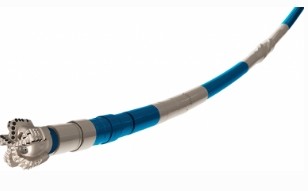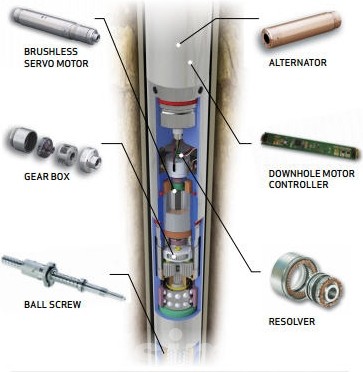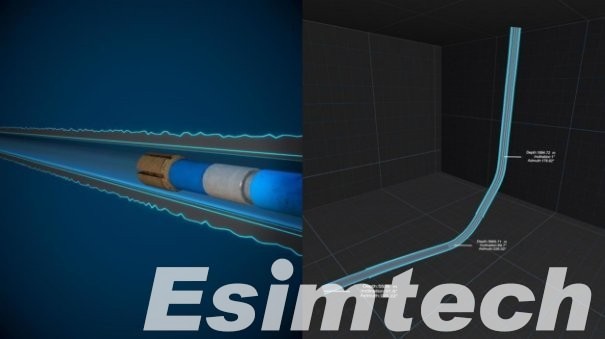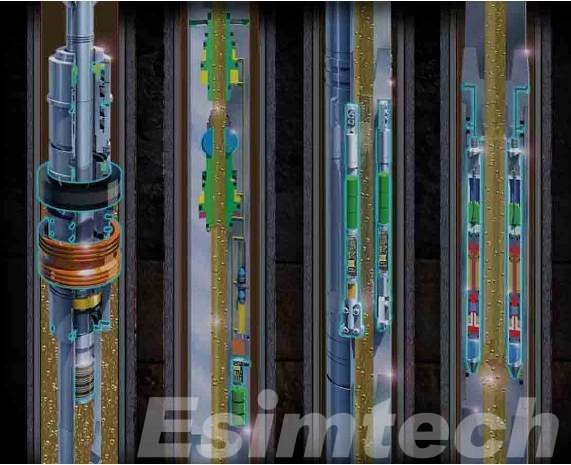How to Prolong the Lifespan of Downhole Equipment
Downhole equipment plays a critical role in the oil and gas industry, facilitating the extraction of hydrocarbons from deep underground. These tools operate under extreme conditions, facing high pressures, temperatures, and corrosive environments. Prolonging its lifespan is both a technical challenge and an economic necessity. Ensuring the durability and reliability of downhole tools can significantly reduce downtime, maintenance costs, and operational risks. This article explores various strategies to extend the lifespan of downhole equipment.

Implement Predictive Maintenance Strategies for Prolonging the Lifespan of Downhole Equipment
1. Condition Monitoring
Condition monitoring involves continuously assessing the health of equipment to detect anomalies that may indicate potential failures. Key condition monitoring techniques include:
A. Vibration Analysis
- Overview: Vibration analysis uses sensors to monitor the vibration patterns of downhole equipment. Abnormal vibrations can indicate issues such as misalignment, imbalance, or bearing wear.
- Benefits: Early detection of mechanical problems allows for timely interventions, preventing minor issues from escalating into major failures.
B. Temperature Monitoring
- Overview: Temperature sensors track the thermal conditions of downhole equipment. Abnormal temperature variations can signal overheating, lubrication failures, or fluid leaks.
- Benefits: Continuous temperature monitoring helps prevent thermal-related failures and extends equipment life by ensuring optimal operating conditions.
2. Data Analytics and Machine Learning
A. Predictive Algorithms
- Overview: Predictive algorithms analyze historical and real-time data from downhole equipment to forecast potential failures. These algorithms consider various parameters such as pressure, temperature, and vibration.
- Benefits: Accurate failure predictions enable proactive maintenance, reducing unexpected downtime and improving equipment reliability.
B. Failure Mode and Effects Analysis (FMEA)
Overview: FMEA is a systematic method for evaluating potential failure modes and their effects on equipment performance. It helps prioritize monitoring efforts and preventive actions.
Benefits: Understanding the causes and impacts of failures allows for targeted maintenance strategies, improving overall equipment lifespan.
3. Remote Monitoring and IoT Integration
The integration of remote monitoring and the Internet of Things (IoT) enhances predictive maintenance by providing real-time data and enabling remote access to equipment health information.
A. Internet of Things (IoT)
- Overview: IoT devices collect and transmit real-time data from downhole equipment to central control systems. This continuous data flow facilitates comprehensive condition assessment.
- Benefits: Remote monitoring reduces the need for on-site inspections, enabling quicker responses to potential issues and minimizing equipment downtime.
B. Digital Twins
- Overview: A digital twin is a virtual replica of physical downhole equipment. Downhole operation simulation aids in optimizing equipment performance in real-time, incorporating data from sensors and other sources.
- Benefits: Digital twins allow for virtual testing and performance optimization, helping to identify and address potential problems before they occur in the physical equipment.

4. Advanced Diagnostic Tools
Advanced diagnostic tools enhance the effectiveness of predictive maintenance by providing detailed insights into equipment health and performance.
A. Acoustic Emission Testing
- Overview: Acoustic emission testing monitors the sound waves emitted by downhole equipment. Changes in acoustic signals can indicate the development of cracks, leaks, or other defects.
- Benefits: Early detection of structural issues allows for timely repairs, preventing catastrophic failures and extending equipment life.
B. Infrared Thermography
- Overview: Infrared thermography uses thermal imaging to detect temperature variations on the surface of downhole equipment. It helps identify overheating components and areas of poor insulation.
- Benefits: Non-invasive and effective, this method provides immediate insights into thermal anomalies, facilitating prompt corrective actions.
5. Maintenance Optimization
Optimizing maintenance schedules based on predictive insights ensures that downhole equipment receives necessary interventions without unnecessary downtime.
A. Condition-Based Maintenance (CBM)
- Overview: CBM involves performing maintenance activities based on the actual condition of equipment rather than predetermined schedules. It uses data from condition monitoring systems to determine maintenance needs.
- Benefits: CBM reduces unnecessary maintenance tasks, lowers costs, and improves equipment availability by addressing issues only when needed.
B. Reliability-Centered Maintenance (RCM)
- Overview: RCM is a structured process that determines the maintenance requirements of equipment based on its reliability and criticality. It focuses on preserving system functions and managing risks.
- Benefits: RCM ensures that maintenance efforts are aligned with operational priorities, enhancing the reliability and longevity of critical downhole equipment.

Advanced Corrosion Monitoring Techniques to Prolong the Lifespan of Downhole Equipment
1. Electrochemical Techniques
Electrochemical techniques are widely used for real-time corrosion monitoring due to their sensitivity and ability to provide quantitative data on corrosion rates.
A. Linear Polarization Resistance (LPR)
- Overview: LPR measures the polarization resistance of a metal surface, which is inversely related to the corrosion rate. A small voltage is applied, and the resulting current is measured to determine the polarization resistance.
- Benefits: LPR provides real-time data on corrosion rates, enabling prompt detection and mitigation of corrosion issues.
B. Electrochemical Impedance Spectroscopy (EIS)
- Overview: EIS evaluates the impedance of a metal surface over a range of frequencies. This technique assesses the condition of protective coatings and the extent of corrosion by measuring how an applied AC signal is resisted and phase-shifted by the surface.
- Benefits: EIS offers detailed information on the electrochemical processes occurring at the metal surface, including coating degradation and corrosion rates.
2. Non-Destructive Testing (NDT)
Non-destructive testing techniques allow for the detection and assessment of corrosion without causing damage to the equipment.
A. Ultrasonic Testing (UT)
- Overview: UT uses high-frequency sound waves to detect internal corrosion and measure material thickness. Ultrasonic transducers send sound waves into the material, and the reflected waves are analyzed to identify defects and corrosion.
- Benefits: UT provides accurate measurements of material thickness and detects subsurface corrosion, allowing for early intervention.
B. Radiographic Testing (RT)
- Overview: RT employs X-rays or gamma rays to image the internal structure of downhole equipment. Differences in material density, such as those caused by corrosion, are detected in the resulting radiographs.
- Benefits: RT offers a comprehensive view of internal corrosion and other structural defects without disassembling the equipment.

3. Chemical Analysis
Chemical analysis techniques provide insights into the corrosive environment and the chemical processes leading to corrosion.
A. Corrosion Coupons
- Overview: Corrosion coupons are metal samples placed in the downhole environment to measure corrosion rates over time. After a specified exposure period, the coupons are retrieved and analyzed for weight loss and surface condition.
- Benefits: Corrosion coupons offer direct measurement of corrosion rates and allow for the evaluation of different materials in specific environments.
B. Environmental Monitoring
- Overview: Regular analysis of downhole conditions, such as pH, chloride levels, and other chemical parameters, helps understand the corrosive environment. Sensors and sampling techniques are used to monitor these parameters continuously.
- Benefits: Environmental monitoring provides early warnings of corrosive conditions, enabling preventive measures to be implemented before significant damage occurs.
4. Advanced Sensor Technologies
Advanced sensor technologies enhance corrosion monitoring by providing continuous, real-time data on the condition of downhole equipment.
A. Fiber Optic Sensors
- Overview: Fiber optic sensors use light transmitted through optical fibers to detect changes in the environment. These sensors can measure parameters such as strain, temperature, and corrosion-related changes in the optical properties of the fibers.
- Benefits: Fiber optic sensors offer high sensitivity and can operate in harsh downhole conditions, providing continuous and accurate corrosion monitoring.
B. Wireless Sensor Networks
Overview: Wireless sensor networks consist of multiple sensors communicating wirelessly to provide comprehensive coverage of the downhole environment. These sensors can monitor various parameters, including temperature, pressure, and corrosion indicators.
Benefits: Wireless sensor networks enable real-time data collection and remote monitoring, reducing the need for manual inspections and allowing for timely interventions.
5. Smart Coatings
Smart coatings are advanced protective coatings that not only provide a barrier against corrosion but also have self-healing and sensing capabilities.
A. Self-Healing Coatings
- Overview: Self-healing coatings contain microcapsules filled with healing agents that are released when the coating is damaged. The healing agents repair the damaged area, restoring the protective barrier.
- Benefits: Self-healing coatings prolong the lifespan of downhole equipment by automatically repairing minor damages, reducing the need for frequent maintenance.
B. Sensing Coatings
- Overview: Sensing coatings are embedded with sensors that detect changes in the coating’s properties, such as cracking, wear, or corrosion. These coatings can provide real-time data on the condition of the protective layer.
- Benefits: Sensing coatings offer continuous monitoring of the coating integrity, allowing for early detection of degradation and timely maintenance.

Optimize Operating Conditions and Skill Training to Prolong the Lifespan of Downhole Equipment
Adjusting operational parameters to minimize stress on downhole equipment can prevent premature wear and tear
1. Controlled Pressure and Flow Rates
Maintaining optimal pressure and flow rates reduces mechanical stress and abrasive damage to equipment.
2. Proper Lubrication
Adequate lubrication minimizes friction and wear on moving parts, enhancing their longevity.
3. Operator Training
Training operators in best practices for equipment use can significantly reduce the likelihood of improper handling and subsequent damage.
4. Maintenance Personnel Training
Ensuring that maintenance staff are skilled in the latest techniques and technologies for equipment upkeep is essential for effective maintenance.

Conclusion
Prolonging the lifespan of downhole equipment requires a multi-faceted approach, integrating predictive maintenance, advanced corrosion monitoring, optimized operating conditions, etc. Through adopting these strategies, the oil and gas industry can enhance equipment reliability, reduce operational costs, and ensure efficient and safe extraction processes. Implementing these measures will not only extend the operational life of downhole tools but also contribute to the overall productivity and profitability of oil and gas operations.
